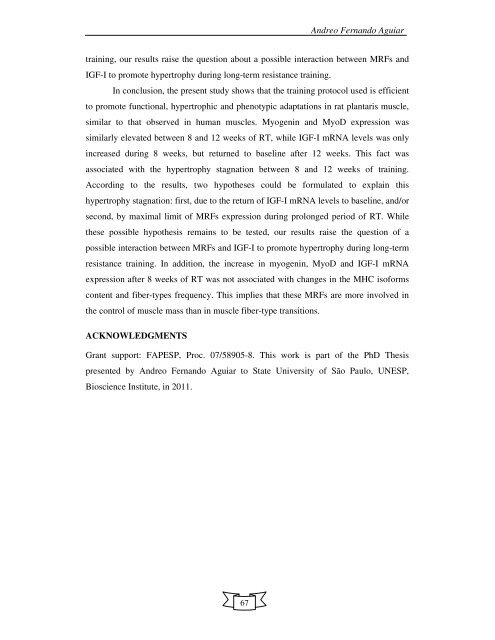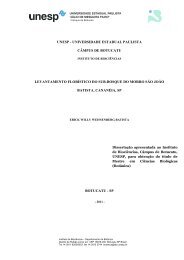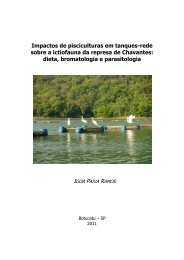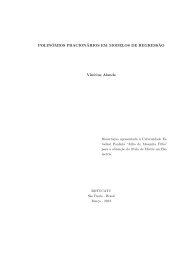Visualizar Tese - Instituto de Biociências - Unesp
Visualizar Tese - Instituto de Biociências - Unesp
Visualizar Tese - Instituto de Biociências - Unesp
Create successful ePaper yourself
Turn your PDF publications into a flip-book with our unique Google optimized e-Paper software.
Andreo Fernando Aguiartraining, our results raise the question about a possible interaction between MRFs andIGF-I to promote hypertrophy during long-term resistance training.In conclusion, the present study shows that the training protocol used is efficientto promote functional, hypertrophic and phenotypic adaptations in rat plantaris muscle,similar to that observed in human muscles. Myogenin and MyoD expression wassimilarly elevated between 8 and 12 weeks of RT, while IGF-I mRNA levels was onlyincreased during 8 weeks, but returned to baseline after 12 weeks. This fact wasassociated with the hypertrophy stagnation between 8 and 12 weeks of training.According to the results, two hypotheses could be formulated to explain thishypertrophy stagnation: first, due to the return of IGF-I mRNA levels to baseline, and/orsecond, by maximal limit of MRFs expression during prolonged period of RT. Whilethese possible hypothesis remains to be tested, our results raise the question of apossible interaction between MRFs and IGF-I to promote hypertrophy during long-termresistance training. In addition, the increase in myogenin, MyoD and IGF-I mRNAexpression after 8 weeks of RT was not associated with changes in the MHC isoformscontent and fiber-types frequency. This implies that these MRFs are more involved inthe control of muscle mass than in muscle fiber-type transitions.ACKNOWLEDGMENTSGrant support: FAPESP, Proc. 07/58905-8. This work is part of the PhD Thesispresented by Andreo Fernando Aguiar to State University of São Paulo, UNESP,Bioscience Institute, in 2011.67
















